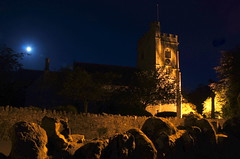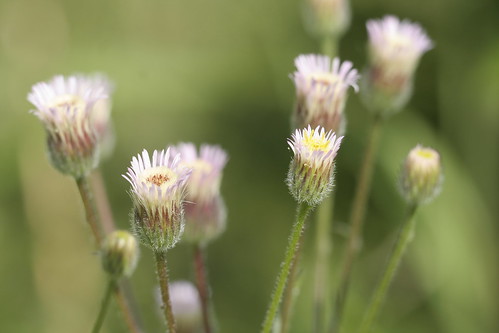Famous birdwatchers (or famous birders, depending on your preference) fall into two loose categories; celebrities who are famous for something else but who are birdwatchers, and birdwatchers (or naturalists) who are famous in their own right. In this post I’ve concentrated on the former — here’s a list of celebs who you may or may not realise are or were birdwatchers. During the process of researching this I found a number of claims that really lack substance (see the bottom of the article), so I’m asking you for help to validate them, and add to them.
Please help to make this the most comprehensive and reliable list of birdwatching celebs on the net!
The celebrity birders we have some evidence of…
Jimmy Carter
According to an interesting article and comments at Birds Etcetera, US president Jimmy Carter has been birding in over 25 countries. USN also suggest that he even managed to find time to do a spot of birdwatching in the Middle East, fitting it around his official business.
Guy Garvey
The lead singer of Elbow reportedly prefers binoculars that have a self-steadying feature, on account of the shakes he gets. Random fact: he features in a song called “Murder of Birds“.
Rory McGrath
Beardy UK comedian Rory McGrath likens birdwatching to a couple of things here in the Birmingham Post in 2008. One of them is Leonard Cohen, the other is a bit more specialist. Either way, he says that it’s the sort of thing people own up to once someone else has the courage to out themselves.
Jimi Goodwin
The multi-instrumentalist from The Doves features in The Bird Effect, a film about how birds affect and inspire people. Not sure if the band name came before or after the passion for our feathered friends, but it’s an apt one anyway!
Bill Bailey
For some reason, it’s not a shock to learn that Bill Bailey is into birdwatching. He’s cool but quirky, like all birdwatchers. He did a short-lived show called Bill Bailey’s Birdwatching Bonanza. He also has quite a minimalist/purist approach to birding according to a Telegraph interview: “I just like going out and seeing birds”.
Jonathan Franzen
The US National Book Award winning novelist has written a number of birding related articles for The New Yorker, although this writer seems to be annoyed that he is the ‘public face of birding’ in their opinion.
Bill Oddie
It should come as no surprise that Bill Oddie likes to do a spot of birdwatching, due to his involvement in Spring Watch, but his own website makes it clear: “Bill Oddie is a birdwatcher, broadcaster, actor, television presenter, writer, song-writer, musician, conservationist and much more…”. I quite liked him in The Goodies. Follow him on Twitter for some amusing comments.
Martin Noble
The guitarist for British Sea Power contributed to the Big Garden Birdwatch blog run by the Guardianin 2009, although he didn’t have much joy, writing “It’s drizzling in Brighton, and there’s not alot of action in my tiny city garden at the moment. I regularly put bread, meal worms and table mix out, so i’m hoping there will be a few hungry regulars braving the rain.”
Prince Philip
Some photographic evidence at last! Here’s an image from 1960 that apparently shows Prince Philip in a hide at Wicken Fen.
Laura Bush
Another link to US politics, Laura Bush listed birdwatching amongst her pastimes according to a post at the American Hiking Society blog.
Alison Steadman
This famous UK actress (Abigail’s Party, more recently Gavin and Stacey) has got some interesting thoughts on birds and birding over at an old Observer post. Well worth a read.
Paul McCartney
After The Beatles, Maccers formed a band called Wings. There is also someone called Paula McCartney who has done a photobook on birdwatching. Luckily for most lists of birdwatching celebrities, Birdchick (via a credible sounding story in the Sunday Mirror) has got evidence that Paul McCartney is also fond of a spot of birdwatching.
Wes Craven
The director of numerous horror films, Wes Craven has said this on Twitter:
As you know I am a birder.So I thought you might have fun seeing what Audubon is up to – letting birds loose on the Internet.
— Wes Craven (@wescraven) October 29, 2011
You can’t get much clearer than that!
David Bailey
This famous photographer says that “at one point I wanted to be an ornithologist” according to an interview with Photo District News, saying that his dyslexia made more visual pursuits more logical.
Trudie Goodwin
Best known as Sgt June Ackland from The Bill, Trudie Goodwin said in this TV Choice interview that she was a fan of birdwatching.
Jeremy Clarkson
Better known for being a boisterous petrol head, it turns out that Clarkson is a birdwatcher according to his own article on the Top Gear blog… although he does admit “But which do I prefer… the Peregrine Falcon – my favourite bird – or the Ferrari 458? I’m afraid the answer is the car” before going on to suggest that extinction of some useless animal species isn’t really a bad thing.
Alex Horne
This comedian tries to explain the difference between birdwatchers and twitchers in an article a few years back on the Telegraph site. He also has a book on the subject and apparently his dad helps out at bird reserves.
Sean Bean
Apart from an illustrious film career, playing Sharpe, appearing in Game of Thrones and being the voice of O2, Sean Bean apparently used to own a kestrel, and learnt ornithology and a love of nature from a neighbour according to this interview.
Jarvis Cocker
Jarvis (of Pulp fame, of course) has worked on an album for the National Trust, sung about trees and written a song called “The Birds in Your Garden” on the album We Love Life, and generally seems like the sort of lefty, arty, eccentric bloke who would enjoy birding.
Alex Zane, Jeff Green and Jayne Middlemiss
I’ve bunched these three together as they all appeared on Bill Bailey’s Sky 1 TV show as mentioned above, and can be seen on the RSPB blog in photos.
PHIL LIGGETT
Thanks to Janet in the comment for bringing to our attention the birding habits of “that brilliant commentator of cycling, especially the Tour de France. In Australia for the Tour Down Under and he is guest speaker for a dinner for Birds Australia.” There is plenty of evidence of Phil Liggett talking about his interest on the web!
Sam West
Another commenter comes through for us, thanks Tom. Sam (Samuel) West, the English actor and director is apparently a keen birdwatcher, and the evidence this time comes in the form of a BBC radio show with Clare Balding (the show is still available as at 25th Jan 2015 if you are interested!). Not sure if that qualifies Clare Balding yet, although she seems to be on a series of wildlife walks in this series so it’s promising!
And the supposedly famous birders I’m not sure about…
Daryl Hannah
There are a number of sites that have obviously been paid to refer to Prince Philip, Paul McCartney and Daryl Hannah as birdwatchers. Hannah does get involved in activist-type stuff, but I can’t find any evidence of her donning a decent pair of binoculars.
Damon Albarn
Chatterbirds claims that the evidence for Damon’s birding is in the lyrics to “Parklife”. This is a pretty tenuous link on its own. This is either corroborated or blindly followed by The Guardian who seem to reproduce Chatterbirds almost to the letter…
Mick Jagger
Maybe one of the tricks to the longevity of The Rolling Stones’ career is a relaxing pastime… Something keeps them going. Multiple sites claim that Jagger is an avid celebrity birdwatcher but I can’t find any decent references. To be honest I can’t even think of any tongue in cheek bird references in the Stones’ back catalogue.
Fidel Castro
Dictator, Marxist, owner of skinny legs… whatever you want to say about Fidel Castro, you will probably find more evidence for those things than him being a birder, despite this being another generally accepted truth. The closest thing I can find is that he once met Ted Parker, a great ornithologist whose life was cut short.
Agatha Christie
Where did Miss Marple get her interest in birdwatching? Perhaps from her creator, Agatha Christie, according to Wikipedia and Ask although I can’t find any other evidence of this… In fact there’s a bigger list of celebrity birders at Wikipedia but many of them don’t provide any backup. If you know something, please let us know in the comments!
More historical birders (thanks to Lee for the suggestion!)
Albert Einstein
As this interview with his chauffeur shows, Einstein was fond of a morning trip to go birdwatching, although he could be left him in tears, due to the beauty of the Mozart he would play on his violin on some occasions. There are a number of biographies that also point to Einstein being a keen bird fan.
Franklin D. Roosevelt
It’s only fitting that FDR park in Pennsylvania is marked as an Important Bird Area — FDR himself was a keen bird-watcher (although he also found time for collecting stamps and playing poker).


